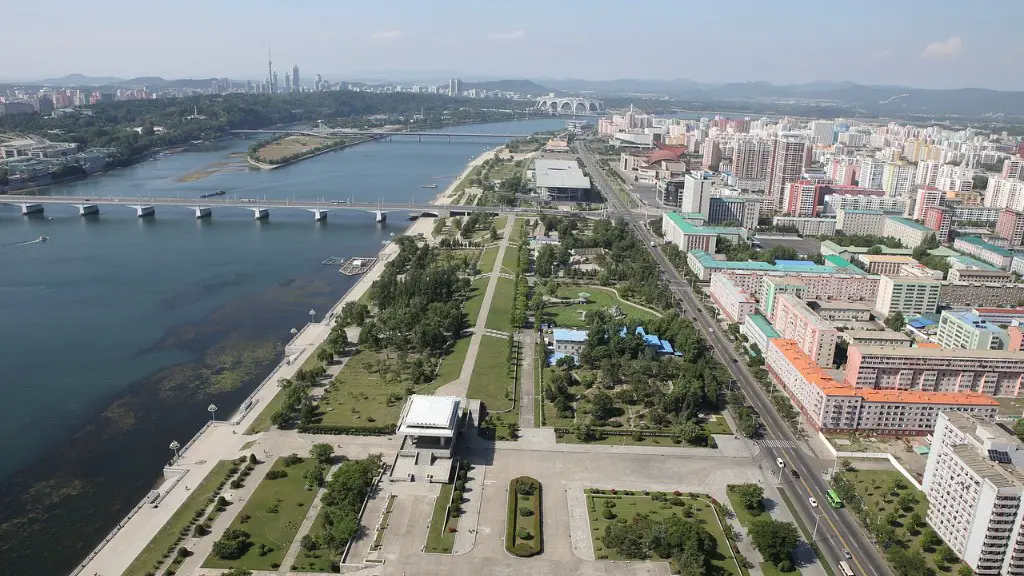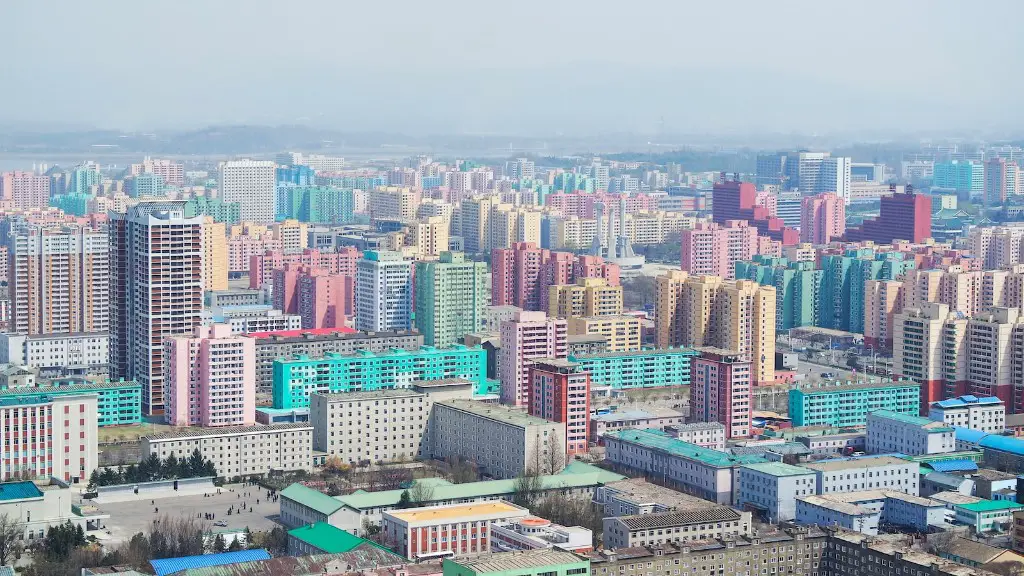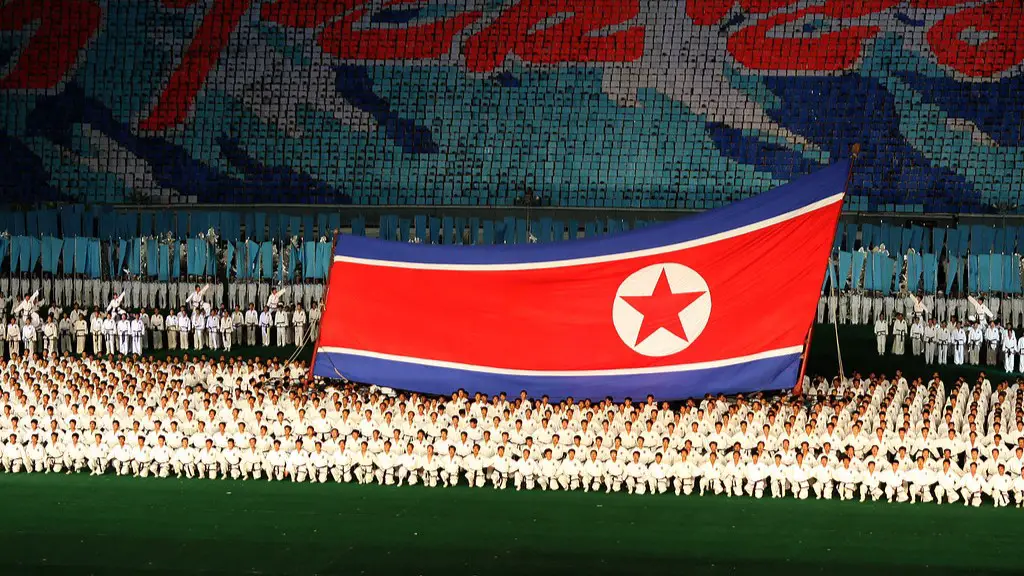The conflict between the United States and North Korea has been ongoing for decades, heating up significantly in recent years as North Korea’s nuclear capabilities have grown more threatening. The U.S. has long sought a peaceful resolution to the conflict, but talks between the two sides have often broken down. In recent years, the U.S. has taken a number of steps to strengthen economic and diplomatic pressure on North Korea, and to bolster its own defenses against the country’s provocations. In this article, we’ll take a closer look at the current situation between the U.S. and North Korea, and explore what options are available for the two sides to find a peaceful resolution.
The situation between the United States and North Korea has become increasingly tense in recent years. North Korea has continued to develop nuclear weapons, despite the objections of the international community. In response, the U.S. and its allies have tightened economic sanctions, while also conducting joint military exercises in the region. These moves have been met with hostility from North Korea, which has threatened to take military action in response to the U.S. and its allies.
Experts say that the conflict is particularly difficult to resolve because of the unique dynamic between the two countries. North Korea is a self-described “rogue state” that operates largely outside of international law. As such, it has few incentives to compromise, and often holds firm to its demands. At the same time, the U.S. has been unwilling to make significant concessions, such as lifting economic sanctions, that could lead to progress in the talks.
The U.S. has long sought a diplomatic resolution to the standoff, but talks between the two countries have often broken down. In 2018, the U.S. and North Korea held a highly publicized summit in Singapore, and Secretary of State Mike Pompeo visited Pyongyang several times for talks. However, these talks were unsuccessful, and there have been no meaningful developments since.
Many experts believe that the best way to resolve the conflict is through direct negotiations between the U.S. and North Korea, with China, South Korea, and other countries playing a supporting role. Such negotiations could include discussion of security issues, such as nuclear disarmament, as well as economic issues, such as sanctions relief. In addition, these negotiations could also provide an opportunity for the two sides to discuss deeper issues, such as cultural and political differences.
There have also been suggestions that the U.S. could try a different approach, such as engaging in direct economic engagement with North Korea. However, there is disagreement on how effective such a strategy would be, and the U.S. has been reluctant to take that course of action.
At the same time, some experts point out that the U.S. is too focused on economic sanctions, which do not address the underlying causes of the conflict. Instead, they suggest that the U.S. should focus on developing a long-term strategy that could engage North Korea in meaningful dialogue and lead to a sustainable resolution to the conflict.
Finding A Way Forward
The U.S. and North Korea both have a vested interest in finding a way forward. For the U.S., resolving the conflict would mean reducing the risk of a dangerous and unpredictable confrontation. For North Korea, it would mean easing the economic pressure it is under and allowing it to focus on its own development. But finding a path to a resolution is challenging, not least because of the deep mistrust between the two sides.
The first step to bridging this divide is to restart dialogue between the U.S. and North Korea. Diplomatic engagement could provide a platform for the two sides to discuss their mutual concerns and address issues such as nuclear disarmament and sanctions relief. This process could be facilitated by international organizations, such as the United Nations or the European Union, or it could be the focus of direct talks between the two sides.
In addition, the U.S. should explore innovative ways to engage with North Korea, such as through aid and development projects. The goal should be to build trust and create positive incentives for both the U.S. and North Korea to reach a mutually agreeable resolution that benefits both sides. Such projects could ultimately help to create an environment in which the long-term differences between the two countries can be addressed.
Regional Responses
The conflict between the U.S. and North Korea has also had significant repercussions for the region. China, Japan, and South Korea has all been affected by the fallout from the ongoing standoff. All three countries have expressed deep concern at the prospect of war, and have sought to mediate between the U.S. and North Korea. China in particular has been active in attempting to find a peaceful resolution to the conflict.
In response, the U.S. has sought to strengthen its ties with its regional allies. It has held joint military exercises with South Korea and has been working to expand economic ties with Japan. In addition, the U.S. has bolstered its own military presence in the region, and has urged China to maintain sanctions against North Korea.
At the same time, the U.S. has also sought to involve more countries in the search for a resolution. It has organized a series of high-level meetings between the U.S. and its allies in order to discuss the North Korean situation and other regional issues. In addition, the U.S. has held talks with Russia and China to discuss how to de-escalate the situation.
Global Impacts
The conflict between the U.S. and North Korea has far-reaching implications for the global community. It has heightened tensions in the region and raised the risk of a catastrophic military confrontation. In addition, the economic sanctions placed on North Korea have had economic and humanitarian impacts on the country, as well as on the economies of its neighbors.
In addition, the conflict has also been a major stumbling block to global efforts to reduce the threat of nuclear weapons. As North Korea has continued to develop nuclear weapons, it has become increasingly clear that the international community must take a united stance in order to put pressure on the country. This has put the U.S. and its allies in a difficult position, as they have been forced to find a balance between their own security interests and the need to send a clear signal to North Korea.
Finally, the conflict has also placed a spotlight on the need to develop a more robust international security architecture. The current system has been slow to respond to the North Korean threat, and some experts argue that the U.S. and its allies should take a more proactive approach to addressing this issue. This could include building closer ties with countries in the region, as well as working to create a more diverse array of economic and diplomatic tools.
Looking Ahead
The ongoing conflict between the U.S. and North Korea is a complicated and dangerous situation that has significant regional and global implications. In order to resolve the conflict, the two sides must find a way to build trust and explore diplomatic and economic options. This could include restarting dialogue between the U.S. and North Korea and exploring innovative ways to engage with the country. In addition, the U.S. should work with its regional allies to create a unified front in order to send a clear message to North Korea.
At the same time, the international community must take steps to strengthen the global security architecture. This could include building closer ties with the countries in the region and working to create a more diverse array of economic and diplomatic tools that can be used to address the North Korean threat. In this way, the international community can work to find a sustainable, peaceful resolution to the conflict.
Alternate Resolutions
In addition to diplomatic engagement, there have been alternative strategies suggested for finding a resolution to the conflict. One possible approach is to use economic incentives to incentivize North Korea to negotiate a settlement. Under this strategy, the U.S. and its allies could offer economic aid and other benefits in exchange for North Korea’s cooperation in de-escalating the conflict and reducing its nuclear programs. The goal of this approach is to provide North Korea with incentives to make the move towards a more cooperative relationship with the U.S. and its allies.
Another possible approach is to use military force to contain the North Korean threat. Under this strategy, the U.S. and its allies would maintain a strong military presence in the region and send a clear message to North Korea that it must abide by international law. This strategy would also involve a strong commitment to enforcing economic sanctions and other measures designed to force North Korea to take meaningful steps towards a peaceful resolution.
Finally, there is a third strategy that has been proposed. This approach involves engaging in direct economic and trade exchanges with North Korea. This strategy is based on the idea that increased economic ties would both strengthen North Korea’s economy and create a stronger incentive for the country to cooperate in resolving the conflict.
Conclusion
The conflict between the U.S. and North Korea is one of the most difficult challenges facing the international community today. The situation is complex, with both sides having deeply entrenched positions and mistrust. In order to bridge the divide, the U.S. and its allies must explore both diplomatic and economic solutions that provide incentives for North Korea to cooperate in de-escalating the conflict. Additionally, the international community must continue to strengthen its global security architecture, in order to ensure that any resolution reached between the U.S. and North Korea is sustainable and serves the interests of all parties.





